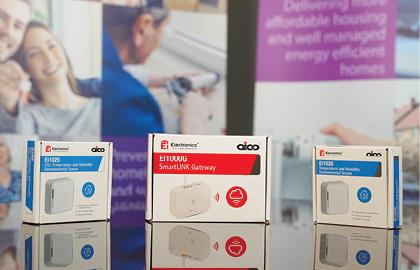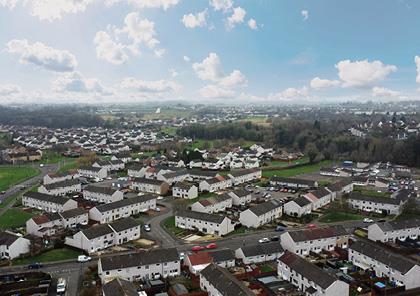05 April 2023

Testing the waters
Back in 2018, a pilot trial was enacted as part of a Scottish Government funded programme, CivTech, which aimed to drive innovation in collaborative and cost-effective technology across the public sector. Homelync (now part of Aico) began an IoT trial across Stirling Council’s social housing stock to tackle many of today’s challenges like fuel poverty – which causes thousands of deaths in the winter every year – and fire safety, CO2 emissions, air quality, and water scarcity.
Homelync joined forces with BT, BlueGreen, Verv, Smart Compliance and Conservation Labs to deploy an integrated IoT trial across five Stirling Council properties. Smart boilers, water leak detectors, connected fire alarms, air quality analysers, and energy optimisers were installed alongside the deployment of Homelync’s IoT Gateway, which provided the internet connection for data to be passed to the cloud-based analytics platform. Insight was then presented in a unified ‘process friendly’ dashboard.
Data from the deployment was extrapolated to represent Stirling Council’s total portfolio of approximately 5,500 properties. The analysis indicated that there would be net annual savings of £452,000 for the council by reducing the number of unnecessary visits, enabling preventative maintenance strategies, optimising investment, reducing voids and helping people to live in their properties longer. While also improving quality of life and reducing fuel poverty, the tenants would directly save £700,000 per year due to energy efficiency and damage prevention. The environment would benefit by a reduction of 1.3 million kg CO2 and saving 15 million litres of water. Through knock on societal benefits like NHS savings, wider society would benefit by a total of £5.4 million per year once the system is fully scaled.

There were, however, deployment challenges. Some devices were difficult to install due to space limitations and several supplier technologies were trialled to identify the most suitable for Stirling’s assets. Some consumer devices required significant commercial and technical integration work before they could be deployed as enterprise solutions. Lessons were learned with regards to sensor placement, for example, air quality analysers must be strategically placed to give accurate readings.
“We’ve seen some interesting insights on these trial properties with several high-risk indications of condensation caused damp and mould; this has really got us thinking how we help the resident manage their environment better and discern if it is actually something inherent with the building performance,” said Stirling Council.
50,000 devices
Following Aico’s trial with Stirling Council, Aico has now committed to a wider rollout including environmental sensors to collect information around tenant’s homes. Collected data will include temperature, humidity and carbon dioxide (CO2) gas levels, along with smoke detection sensors and will dramatically improve the health, safety and wellbeing of residents. Tenants will be able to take actionable measures from insights via a free mobile app and analytics portal.
This is the first full rollout of a multi technology and sensors connected home solution across an entire housing portfolio stock and currently the largest UK social housing sector rollout, with 50,000 IoT devices being installed over the next ten years in homes managed by Stirling Council Housing Service.
Environmental sensors around the properties will alert the council in real-time and provide early warning of damp, mould, ventilation and any other potential issues, while helping the tenant to understand energy consumption levels with heating their home. In a time of fuel poverty, connected devices are emerging as a powerful tool ensuring social homes are healthy to live in and used in an energy efficient manner. Homes will also benefit from a significant fire safety upgrade and be equipped with connected smoke, heat and carbon monoxide (CO) alarms.
Having the ability to identify the least thermally efficient homes means that Stirling Council can take intelligence led decisions to target capital investment programmes at those properties.
“When considering our sustainability goals, the data generated will help us identify the least energy-efficient homes and take action,” said Stirling Council. “It will also provide insight into the performance of properties that have been recently retrofitted to ensure they remain healthy environments to live in.”
The Fuel Poverty Act (Scotland) also seeks to protect residents of all households but particularly those in rural, highland and island communities from facing fuel poverty. Stirling council have around 20% of its housing portfolio in rural areas.
By connecting all of its housing stock, Stirling Council will continue to make intelligence led and data-based decisions, enabling more efficient safety checks, identification of trends and improvements for planning staff, and property investment and budget decisions. It will also trigger preventative maintenance measures by alerting staff to early causes of deterioration in a property’s environment.
“This technology helps us manage our housing stock through reliable data driven intelligence, take prioritized investment decisions and improve customer satisfaction,” said Stirling Council.
Residents using the free app gain a view of the safety and health of their indoor environment. The app also provides advice and guidance on how to improve living conditions and live a healthier and safer life whilst reducing carbon footprint and saving money on energy.








